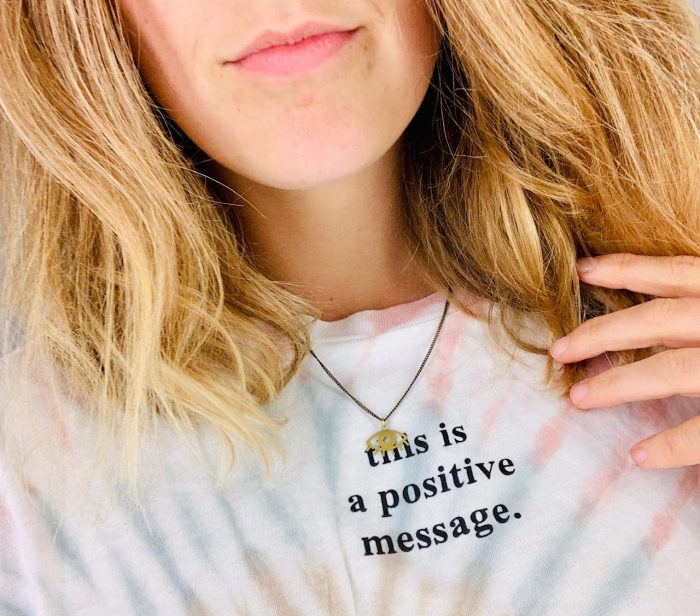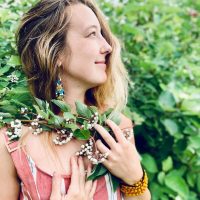Elephant’s Continually-updating Coronavirus Diary. ~ Waylon
One of the fundamental teachings of holistic healing is that our emotional body must be given as much attention as our physical body.
Back when I was studying traditional Chinese medicine, I remember my teacher looking at us and saying, “If you don’t have an embodied understanding of how true this is, then don’t teach it.“
I started to reflect. I thought, “Well, I talk about emotional health. I encourage my yoga students to process emotionally.” I thought about it a little longer and wondered, “Am I genuinely taking care of my emotional health? Am I giving it the same importance as my physical body?
For me, the COVID-19 pandemic brings this question to the forefront. I am bombarded with online classes to move and exercise, but devoid of spaces to feel.
A teacher will start class by saying, “We’re not here for our bodies. We’re here to go inside and love ourselves fully as we are!” Then we proceed to drill poses. We do plank pose and move on superspeed through standing poses, to arm balances, to the Downward-Facing Dog, and then to chin stands.
Here is what it looks like for me: I lie in savasana and cry while listening to a poetic speech about how I should learn to accept myself, and then I go to the bathroom to look in the mirror and see if my stomach is flatter.
This tendency to obsess on my progress based on physical capabilities and image is useless and exclusive. I want to change, and I want the yoga world to come with me.
When I started doing yoga, I became attached to the physical postures and picked up the prescriptive healthy diet. I quickly became rigid (and conceded) about how I prioritized time for my health (physical asanas). I was told it was a good use of my time because the poses are spiritual; they will help me with my emotional processing and connection to myself. But, deep down I was just hoping to lose weight—that spiraled an addiction to digestion.
A common principle in Ayurveda is proper digestion or proper agni—it is what equals health. I focused my diet primarily on fiber; I became paranoid about gut health, tongue scraping, and warm lemon water. I designed all of my self-practices (asana sequences) around the core, elimination, and building fire.
Then, my TCM teacher asked, “How do you digest your emotional life?“
“Well, I go to yoga,” I said.
She looked at me with a curious glance. Was I emotionally digesting my experiences by hyperventilating through sun salutations? Yes and no.
I do think it’s true that the poses themselves open the chakra energy centers. By moving in our bodies, specifically in asana postures, we will bump up and rub against our emotions. That is what’s unique about yoga rather than physical exercise—the component of awareness.
But, if we are not offering space and time for students to reflect, are we allowing the practice to be nothing more than a dance of different shapes for the sake of a fit body?
It has started to seem like a contradiction to me. Going to yoga classes—basically, just exercise classes now—and being told that I am learning how to love myself and ease my anxiety, but leaving with more guilt, shame, insecurity, and obsession with my body.
How do we shift this?
I’m using this time to get curious about what would be different in my life if I cared about my emotional health (something others can’t necessarily see in a picture) as much as my physical health.
Here I am now, in the exploration phase. This journey looks like me doing more self-guided, silent, and slow practices. I am using online platforms to explore, creating circles for authentic sharing and listening, and singing at three in the morning when I can’t sleep. Sometimes I need to be extra loud so that everything inside of me can come out.
When I think about having an embodied understanding of holistic health, it’s all about being gentle with myself while sitting with the anxiety, powerlessness, fear, and anger inside. I know, without any doubt in my mind, that yoga is a tool for this processing.
For me, my yoga practice needs to look a lot different than what I’ve been seeing and experiencing.
For me, a better practice is one that is accessible to all body types. It is designed with props and speed that anyone can follow. During this practice, we can still maintain awareness of what’s happening in our bodies. It’s designed with space and silence to check-in.
What do I feel when I open my hips this way?
Do I feel safe and empowered to hold this pose, or am I doing it to appease a rigid standard of success?
The teacher’s speech becomes less important than what our inner voice has to say.
When I enter my silence, there are infinite answers. There are voices of encouragement, empowerment, and love. There is an intuitive sense of direction beneath the shame and highly ingrained ideas of how society (especially the yoga world) has told me to look and behave. These voices often ask me to turn off the yoga video, take a walk outside, nap, call a friend, or journal.
Regardless of discovering my inner teacher, I will still need guides, yoga teachers, healers, and friends who provide safe spaces for me to explore my insides.
I also need them to trust that my voice is just as important as theirs, and I want to ask them if we can do more than just exercise.
In this COVID-19 world, I want to get curious about the yoga environments we can create. Do our studios represent a balance of physical and emotional health? Do we, as teachers, ask our students how they feel and what they need, physically and emotionally?
I want to be a teacher and a student who moves slowly enough to hear the inner voice. I want to utilize breathwork, circle-sharing, and singing to encourage introspection and self-expression. What other tools do we have?
I fantasize about a yoga world that shows a diversity of practices for empowerment, beauty, and health. To do that, we need to stop glorifying the physical body—specifically, the skinny, white, hyper-mobile body.
We need to see that self-love reaches more profoundly than our image. It requires sitting with ourselves in our pain and our joy and creating a space where anyone feels welcome to join us. That, to me, is the epitome of inclusive yoga and holistic health.
As teachers and practitioners, how are we using this time in quarantine to embody the belief that emotional health is just as important as the physical aspect?









Read 7 comments and reply